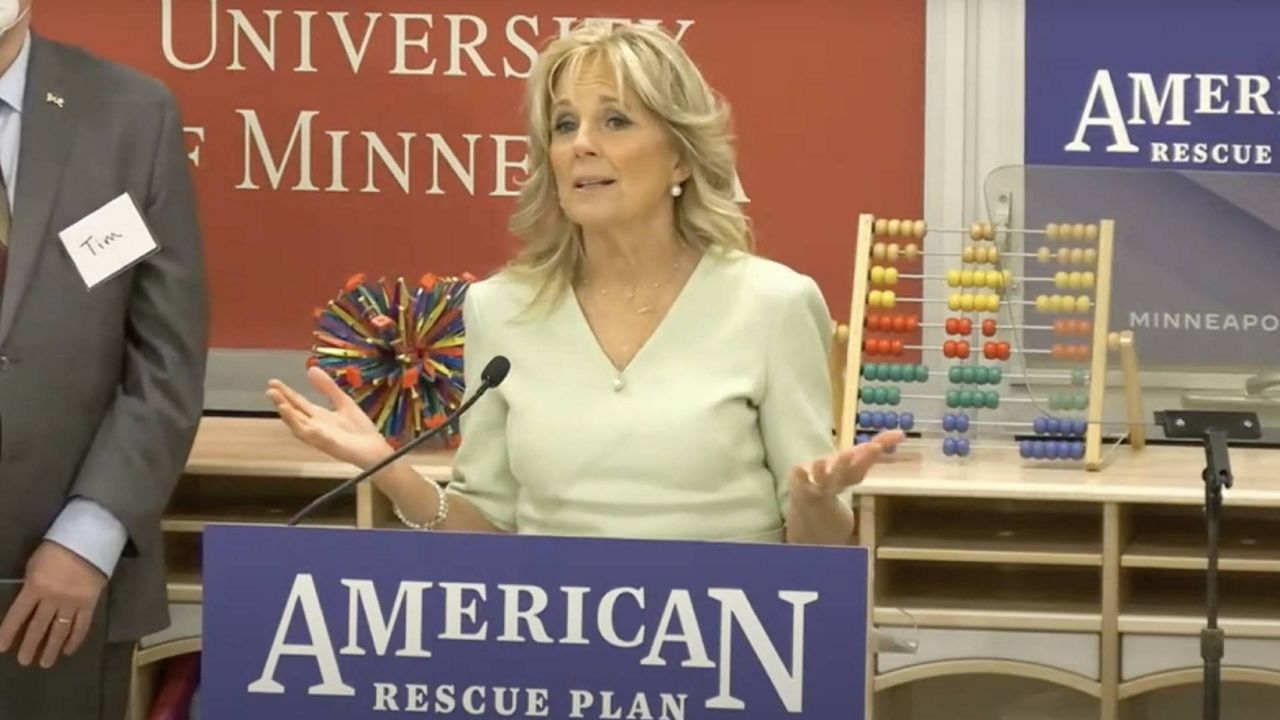The first lady on Wednesday traveled to Minnesota to highlight how the Biden administration has invested COVID relief funding in child care over the last year, holding a round table conversation with parents, experts and local officials on issues including affordability and access.
Speaking at the University of Minnesota’s Institute of Childhood Development, Dr. Jill Biden first recounted a time when she was teaching a community college class and a student brought her four-year-old with her because a babysitter had fallen through.
“She couldn’t afford to miss class,” Biden said. “I tried to give her a smile when I saw her looking at her little boy so nervously, praying that he would make it through.”
Biden pointed to the millions of women who left or scaled back their work during the pandemic because they needed to care for their kids at home.
“For millions of parents, the situation was dire and urgent,” she said.
The COVID-19 relief bill that President Joe Biden signed nearly a year ago included $39 billion for child care, which went out to states, tribes and territories to help keep day care centers and other providers open, boost child care worker pay and subsidize the cost of care for families.
Minnesota Governor Tim Walz said the American Rescue Plan funding was critical to his state, but he said there is more to be done to boost child care availability.
“The economics behind this is that child care providers are the economic engine behind the rest of the economy. It has to be there,” he said, later adding: “There's providers across the state wondering if they can stay open next week.”
Health and Human Services Secretary Xavier Becerra joined the first lady on Wednesday, noting how his department oversaw the rollout of the child care funds, including $526 million that went to Minnesota.
Dr. Biden heard from a local parent named Shawnice Walls, a single, working parent and student with two young children.
“What did you have to give up?” Biden asked her.
“I set goals to be an A+ student, but I wasn't. I couldn't do all the studying that I wanted to do,” Walls said. “I’ve mostly put my kids first.”
She pointed to the state’s child care assistance program as crucial for getting through the pandemic along with juggling work and school.
“They're the ones that really had my back through all of this,” she said.
President Biden, who visited a child care center in Connecticut in October, also proposed as part of his domestic agenda both universal pre-school and a program to limit the cost of child care to seven percent of income for many families. It’s unclear if those pieces will make it into Democrats’ final version of the president’s proposed social and climate legislation.



